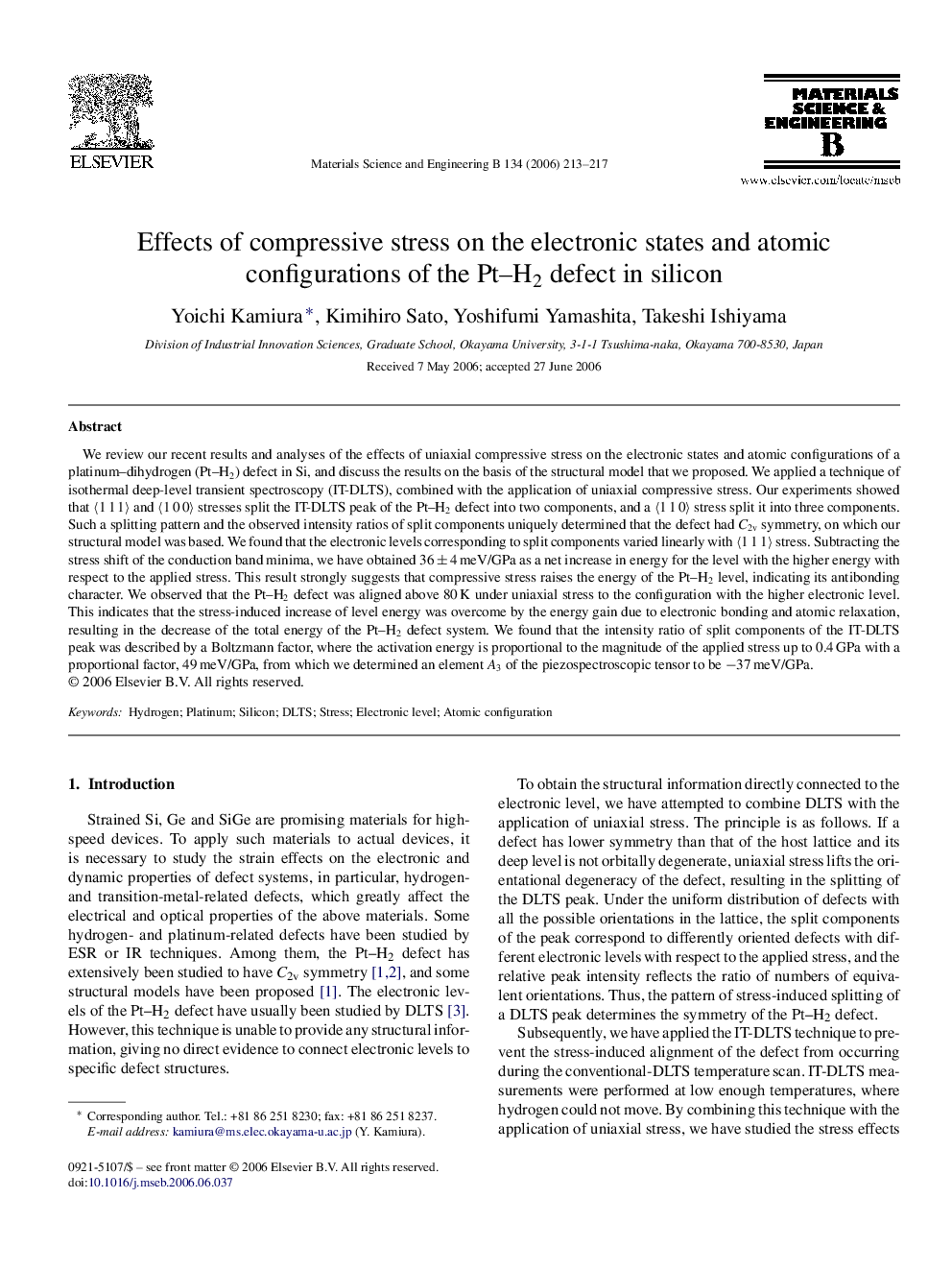| Article ID | Journal | Published Year | Pages | File Type |
|---|---|---|---|---|
| 1531803 | Materials Science and Engineering: B | 2006 | 5 Pages |
Abstract
We review our recent results and analyses of the effects of uniaxial compressive stress on the electronic states and atomic configurations of a platinum-dihydrogen (Pt-H2) defect in Si, and discuss the results on the basis of the structural model that we proposed. We applied a technique of isothermal deep-level transient spectroscopy (IT-DLTS), combined with the application of uniaxial compressive stress. Our experiments showed that ã1 1 1ã and ã1 0 0ã stresses split the IT-DLTS peak of the Pt-H2 defect into two components, and a ã1 1 0ã stress split it into three components. Such a splitting pattern and the observed intensity ratios of split components uniquely determined that the defect had C2v symmetry, on which our structural model was based. We found that the electronic levels corresponding to split components varied linearly with ã1 1 1ã stress. Subtracting the stress shift of the conduction band minima, we have obtained 36 ± 4 meV/GPa as a net increase in energy for the level with the higher energy with respect to the applied stress. This result strongly suggests that compressive stress raises the energy of the Pt-H2 level, indicating its antibonding character. We observed that the Pt-H2 defect was aligned above 80 K under uniaxial stress to the configuration with the higher electronic level. This indicates that the stress-induced increase of level energy was overcome by the energy gain due to electronic bonding and atomic relaxation, resulting in the decrease of the total energy of the Pt-H2 defect system. We found that the intensity ratio of split components of the IT-DLTS peak was described by a Boltzmann factor, where the activation energy is proportional to the magnitude of the applied stress up to 0.4 GPa with a proportional factor, 49 meV/GPa, from which we determined an element A3 of the piezospectroscopic tensor to be â37 meV/GPa.
Related Topics
Physical Sciences and Engineering
Materials Science
Electronic, Optical and Magnetic Materials
Authors
Yoichi Kamiura, Kimihiro Sato, Yoshifumi Yamashita, Takeshi Ishiyama,
